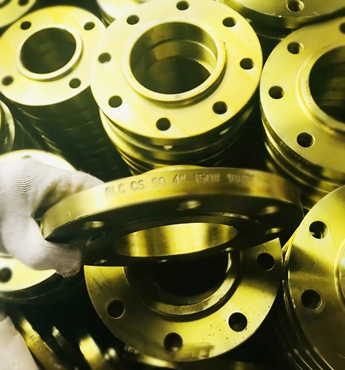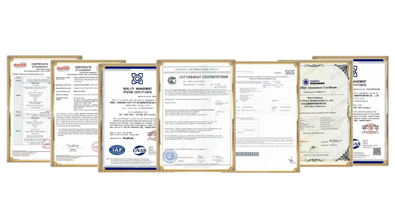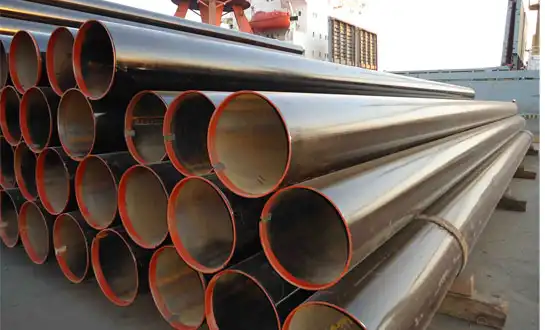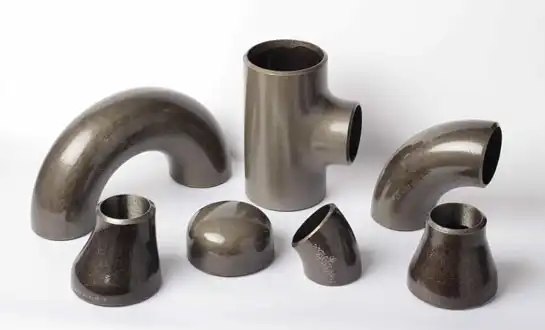Correct Installation of Steel Pipe Flanges
Proper installation of steel pipe flanges is critical for ensuring leak-proof connections and long-term system integrity in piping networks. These essential components create secure joints between pipes, valves, and equipment while allowing for maintenance access when needed. Correctly installed steel pipe flanges can withstand extreme pressures, temperatures, and mechanical stresses in industrial applications ranging from oil refineries to water treatment plants. This guide covers professional installation techniques that address alignment, bolting procedures, and gasket selection to optimize flange performance. By following industry best practices for steel pipe flanges installation, engineers can prevent common issues like joint leakage, bolt fatigue, and gasket blowouts that compromise system reliability.
Pre-Installation Preparation and Inspection
Verifying Flange Specifications and Materials
Before installing steel pipe flanges, technicians must confirm all components meet the required specifications for the application. This includes checking the flange's pressure class, material grade, and dimensional standards (ASME B16.5 or equivalent). The raised face height and surface finish (typically 125-250 microinches for standard applications) should be inspected for machining defects that could affect sealing. All steel pipe flanges must be free from visual defects like cracks, pits, or warping that might compromise their structural integrity. For critical services, material test certificates should be verified to ensure chemical composition and mechanical properties match project requirements. Proper storage conditions (dry, protected from elements) must be maintained prior to installation to prevent corrosion or damage to sealing surfaces.
Cleaning and Surface Preparation Techniques
Effective cleaning is essential for achieving proper seals with steel pipe flanges. All mating surfaces must be thoroughly cleaned using appropriate solvents to remove oil, grease, and particulate matter. For stubborn deposits, non-metallic abrasive pads can be used without damaging the flange face finish. The gasket seating area requires particular attention - any scratches deeper than 0.05mm should be addressed with precision machining. Bolt holes must be cleared of burrs or obstructions that could interfere with proper bolt alignment. After cleaning, protective covers should be maintained on steel pipe flanges until immediately before assembly to prevent contamination. In corrosive environments, applying temporary corrosion inhibitors to cleaned surfaces may be necessary during the installation process.
Alignment and Positioning Best Practices
Proper alignment of steel pipe flanges before bolting is crucial for preventing uneven gasket compression and subsequent leaks. Laser alignment tools or straightedges should verify that flange faces are parallel within 0.2mm across any diameter. The pipe spools must be properly supported to eliminate external loads on the flange connection during installation. Temporary alignment pins can help maintain positioning while inserting initial bolts. For large-diameter steel pipe flanges, hydraulic flange spreaders may be necessary to achieve proper gap alignment without damaging components. The angular alignment of bolt holes should be within 1° of perfect alignment to prevent bolt stress during tightening. All alignment checks should be performed before gasket insertion to avoid damaging the sealing element.

Flange Assembly and Bolting Procedures
Proper Gasket Selection and Installation
Selecting the correct gasket type is critical for steel pipe flanges installation success. Spiral-wound gaskets with flexible graphite filler are commonly used for high-temperature applications, while rubber-faced gaskets suit lower temperature services. The gasket must be properly centered within the flange faces, with particular attention to inner diameter alignment to prevent flow restriction. For raised face steel pipe flanges, the gasket should cover the entire raised surface but not extend into the bolt circle. Applying a thin layer of approved lubricant or anti-seize compound can aid gasket seating in certain applications, though this isn't recommended for all gasket types. Never reuse gaskets in steel pipe flanges connections, as the compression set and potential damage from previous service compromise their sealing capability.
Bolt Tightening Sequence and Torque Application
The bolting procedure for steel pipe flanges requires careful execution to ensure uniform gasket compression. Begin by hand-tightening all bolts to bring flange faces into initial contact with the gasket. Follow a star or crisscross tightening pattern rather than sequential tightening around the flange circumference. For best results, use a calibrated torque wrench and perform tightening in three progressive stages (typically 30%, 70%, and 100% of final torque value). The final torque values for steel pipe flanges should be calculated based on bolt material, size, and lubrication conditions rather than using generic tables. In critical applications, consider using hydraulic bolt tensioners that provide more precise and uniform bolt loading across all studs. Always verify that bolts protrude evenly through the nuts (typically 2-3 threads minimum) after final tightening.
Final Verification and Quality Checks
After completing the bolting procedure, steel pipe flanges installations require thorough verification. Measure the flange gap at multiple points around the circumference to confirm uniform compression - variations should not exceed 10% of the nominal gap. Visually inspect for proper gasket protrusion (typically 1-2mm beyond the flange face) and verify all bolts have been tightened to specification. For critical services, consider performing a bolt load verification using ultrasonic measurement techniques. Document all installation parameters including torque values, bolt lubrication used, and gasket information for future reference. In pressure systems, a post-installation hydrotest can validate the integrity of the steel pipe flanges connection before placing the system into service.
After-Installation Care and Observation
Initial System Commissioning Procedures
After installation, steel pipe flanges require special attention during the first operational period. For systems experiencing thermal cycling, a retorquing procedure should be performed after the first few heat cycles to compensate for gasket relaxation and thermal expansion effects. Gradually increase system pressure while monitoring flange connections for any signs of leakage. Implement a "walkdown" inspection program during initial operation to identify any unexpected movements or vibrations that could affect flange integrity. For insulated steel pipe flanges, ensure insulation doesn't trap moisture against flange surfaces, which could accelerate corrosion. Document all commissioning observations and any adjustments made to the original installation for future maintenance reference.
Routine Inspection and Maintenance Practices
Regular inspection of steel pipe flanges is essential for long-term reliability. Establish a visual inspection schedule to check for signs of leakage, bolt corrosion, or gasket degradation. Ultrasonic thickness testing can monitor flange wall thickness in corrosive environments. For critical applications, implement thermographic surveys to identify hot spots indicating potential gasket failures. Maintain proper bolt loads by periodically checking torque values, especially after significant temperature or pressure fluctuations. When performing maintenance on steel pipe flanges, always follow proper safety procedures including depressurization and verification of zero energy state before disassembly. Keep detailed records of all inspections and maintenance activities to support condition-based maintenance decisions.
Addressing Common Flange Connection Issues
Even properly installed steel pipe flanges may develop issues requiring intervention. For minor leaks, carefully retorquing bolts (following the original tightening sequence) may resolve the problem without disassembly. More significant leaks typically require replacement of the gasket and re-machining of flange faces if damaged. Address bolt corrosion promptly by replacing affected fasteners and applying appropriate protective coatings. In cases of flange face erosion or pitting, consider using engineered repair sleeves or machining the faces to restore sealing surfaces. For recurring issues with specific steel pipe flanges connections, evaluate whether upgrading to a different gasket type or flange rating might provide better long-term performance.
Conclusion
Correct installation of steel pipe flanges requires meticulous attention to preparation, assembly techniques, and quality verification. By following standardized procedures and manufacturer recommendations, engineers can ensure reliable, leak-free connections that withstand operational demands. Proper installation not only prevents immediate issues but also extends the service life of the entire piping system.
HEBEI RAYOUNG PIPELINE: Professional-Grade Flange Solutions for Demanding Applications
At HEBEI RAYOUNG PIPELINE TECHNOLOGY CO., LTD, we manufacture premium steel pipe flanges that meet the most stringent international standards for quality and performance. Our ISO 9001:2015 certified production processes ensure dimensional accuracy and material integrity in every flange we produce. From standard ASME B16.5 flanges to custom-engineered solutions, our products are designed for reliable performance in even the most challenging installations. Contact our technical experts today at info@hb-steel.com to discuss your specific flange requirements and discover how our products can enhance your piping system's reliability and longevity.
References
1. ASME PCC-1 - Guidelines for Pressure Boundary Bolted Flange Joint Assembly
2. ASTM A193/A193M - Standard Specification for Alloy-Steel and Stainless Steel Bolting Materials
3. API 6A - Specification for Wellhead and Christmas Tree Equipment
4. ASME B16.5 - Pipe Flanges and Flanged Fittings
5. MSS SP-25 - Standard Marking System for Valves, Fittings, Flanges and Unions
6. ISO 15612 - Specification and qualification of welding procedures for metallic materials

Need a quote? Want to see samples? Just say hello. We’re friendly. We’re fast. And we’re ready when you are.

Welcome to RAYOUNG – Strong Pipes, Stronger Promise




